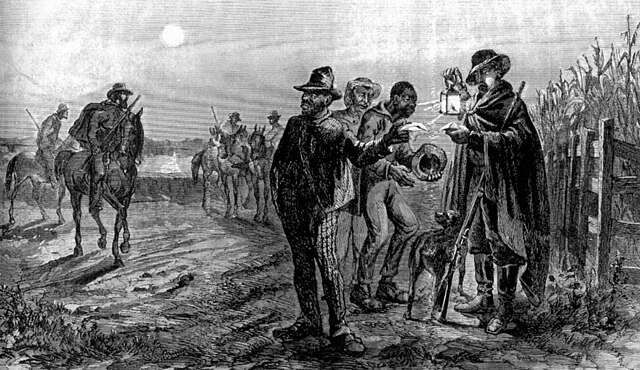Slave patrols—also known as patrollers, patterrollers, pattyrollers or paddy rollers—were organized groups of armed men who monitored and enforced discipline upon slaves in the antebellum U.S. southern states. The slave patrols' function was to police slaves, especially those who escaped or were viewed as defiant. They also formed river patrols to prevent escape by boat.
Depiction of Mississippi slave patrol
A slave catcher is a person employed to track down and return escaped slaves to their enslavers. The first slave catchers in the Americas were active in European colonies in the West Indies during the sixteenth century. In colonial Virginia and Carolina, slave catchers were recruited by Southern planters beginning in the eighteenth century to return fugitive slaves; the concept quickly spread to the rest of the Thirteen Colonies. After the establishment of the United States, slave catchers continued to be employed in addition to being active in other countries which had not abolished slavery, such as Brazil. The activities of slave catchers from the American South became at the center of a major controversy in the lead up to the American Civil War; the Fugitive Slave Act required those living in the Northern United States to assist slave catchers. Slave catchers in the United States ceased to be active with the ratification of the Thirteenth Amendment.

An illustration of slave patrollers inspecting the passes of a group of enslaved African Americans
An illustration of a slave catcher in Imperial Brazil by German artist Johann Moritz Rugendas.


